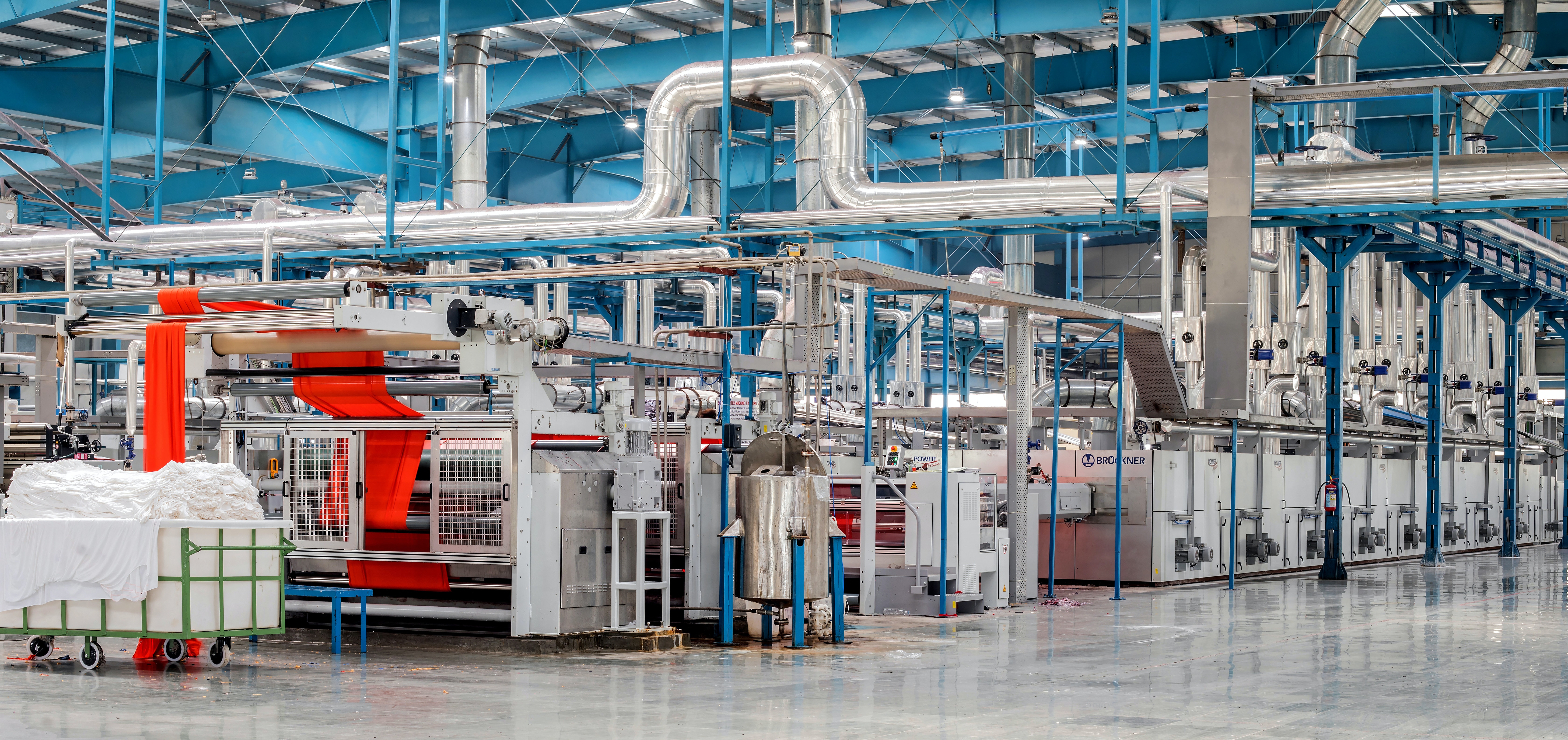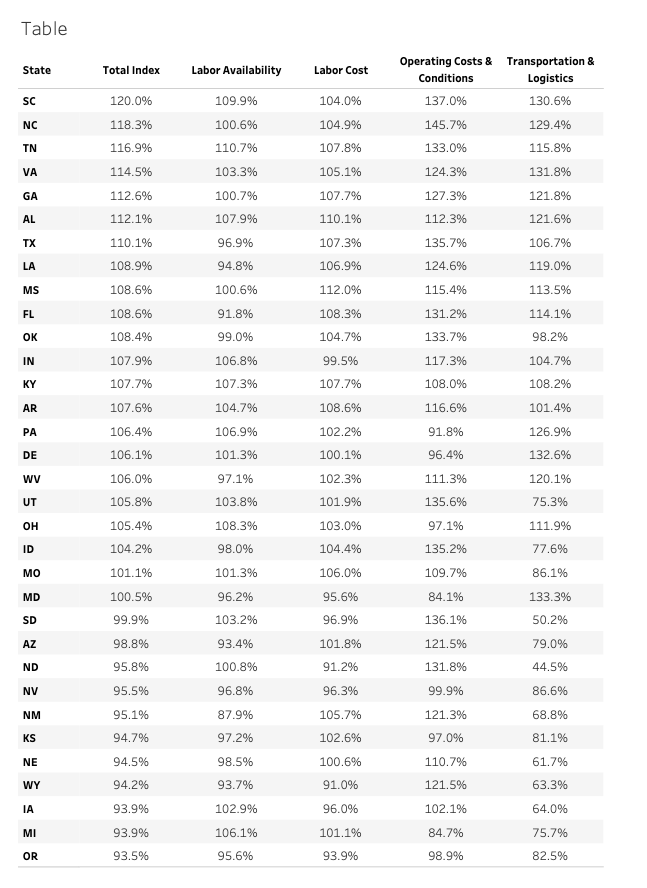

With manufacturing projects being heavily recruited across the United States, how should companies objectively assess which states offer the most competitive environment for investment?
Independent location advisory firm Site Selection Group tackles this question annually through their proprietary model called GeoCision®. I recently reviewed their 2022 state competitiveness rankings for manufacturing to gain insights on key location factors.
How Manufacturing States are Ranked
Site Selection Group analyzed states across four categories, weighted as follows:
- Labor Availability (40%) - Population statistics, demographics, occupation supply/demand
- Labor Costs (15%) - Wages, cost of living, housing costs
- Operating Costs (25%) - Taxes, utilities, organized labor, business continuity
- Transportation & Logistics (20%) - Drive time to population centers, airport capabilities, distance to major ports
Using Data to Find States Most Suitable for Manufacturing
Site Selection Group's location advisory model removes personal bias by algorithmically scoring states based on objective data related to labor, costs, regulations, and infrastructure. This data-first approach provides an impartial starting point for finding optimal locations.
Top States
- South Carolina - Strong labor force growth and low costs
- North Carolina - Rapid population gains and skilled workforce
- Tennessee - Competitive wages and business-friendly policies
- Virginia - Educated labor pool and logistics infrastructure
- Georgia - Abundant workers and transportation access
Bottom States
- Maine - High costs, limited infrastructure, and aging population
- Connecticut - Onerous tax rates and stringent regulations
- Rhode Island - Unfavorable demographics and poor infrastructure
- Vermont - Sparse population, limited infrastructure, high costs
- New Jersey - Burdensome tax climate and dense population
Moving From Macro to Micro Analysis
While these state rankings highlight broad advantages, the optimal location depends on factors unique to each manufacturer's supply chain, facilities needs, and operating requirements.
Once high potential states are identified, firms should perform detailed analysis of local conditions, incentives, regulations, and real estate options to find the ideal site.
In summary, data and analysis is crucial, but site selection should move from macro to micro as the process advances. Combining impartial data and on-the-ground diligence is key to long-term location success.


source: Site Selection Group
While these are the top states overall, the rankings highlight strengths and weaknesses. Other states may be optimal for specific projects based on custom needs and supply chain logistics.
In summary, Site Selection Group's analysis offers a data-driven look at manufacturing competitiveness across states based on key investment factors. While not a definitive guide, the rankings help provide an objective starting point for finding the optimal location based on a project's unique needs.
Incorporating Reviews into Your Decision-Making Process
As you explore the factors that influence your choice of state for your manufacturing business, remember that data isn't everything. By using Scout's reviews and connecting with local economic developers, you can access a comprehensive toolkit for making informed decisions.
If you can learn from others operating in a given state, you might have an inside look into what your journey could be like.
So, as you embark on your quest to find the ideal state for your manufacturing business, remember that gathering insights from those in your shoes today combined with accurate data can help you make the right decision.



